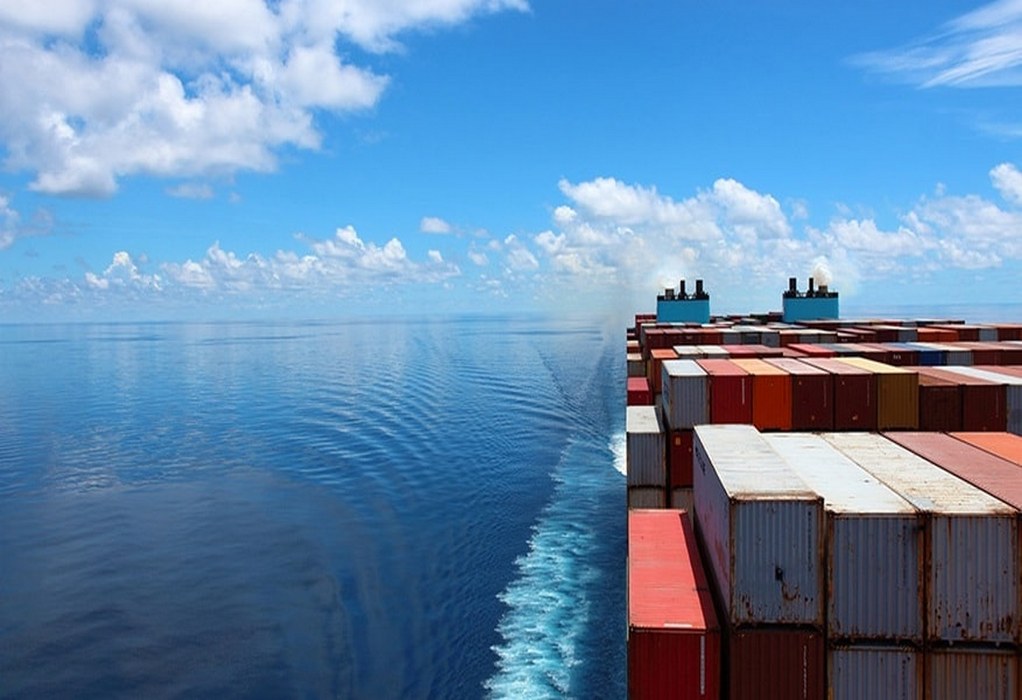According to the latest report by Lloyd’s Register Maritime Decarbonisation Hub, e-ammonia might become the most widely used marine fuel among hydrogen-based fuels, while liquefied bio-methane is expected to lead among biofuels.
More specifically, the Future of Maritime Fuels report reviews a broad variety of fuel mix estimates and identifies two potential transportation paths: hydrogen-based fuels and biofuels. The research also assesses the energy supply system dynamics in various scenarios, taking into consideration predicted supply and other sector fuel needs.
The shipping industry is expected to become the largest user of clean ammonia by 2050, with an average share of 46%. E-ammonia is expected to become the most highly adopted maritime fuel in the long term, with an average market share of 35% by 2050.
The shipping industry’s consumption of blue and e-ammonia is expected to increase from 0.79 EJ in 2030 to 6.06 EJ in 2050, making it the largest user of ammonia compared to other sectors. The hydrogen required to supply ammonia could represent 3.7%-7% of the expected global hydrogen demand in 2030 and 8.3%-17.5% in 2050.
While there is little concern about the technical potential of producing hydrogen due to renewable energy sources, the key supply challenge is the ability to scale production at the required pace.
If the shipping industry becomes the largest user of clean ammonia, it will need to drive development for supply infrastructure and show leadership in securing adequate scaling.
Bio and renewable diesel, including liquefied biomethane, are expected to become the most widely adopted maritime fuels in the long term. Liquefied biomethane is projected to capture an average 34% market share by 2050, with varying market shares due to future prices and supply limits.
The average share of liquefied biomethane will result in significant energy demands, such as increasing from 0.5 EJ in 2030 to 4.58 EJ in 2050. However, the expected supply for shipping is expected to fall short, indicating either high demand or shipping’s larger share in the global biomethane market.
The shipping industry’s role in driving the global biomethane market dynamics could become crucial, although it is unlikely that biomethane will become a dominant maritime fuel.
Methanol is expected to have a lower market share than ammonia and biomethane, contradicting the increasing ordering of dual-fuel methanol vessels. By 2050, combined bio and e-methanol will capture 13.4% of total shipping fuel.
Biomethanol is projected to have a higher uptake (8.6%) than e-methanol (4.8%), with a market share of 43% by 2050. This results in lower energy demands compared to ammonia and liquefied biomethane.
The expected supply of both bio and e-methanol should meet demand, but demand estimates are relatively low. If the shipping industry becomes a major user of methanol, it will need to drive the development of economically viable biomethanol and e-methanol options.
Following the analysis of different fuel mix projections, the report identifies avenues for further exploration, such as deeper examination of fuel supply dynamics and their integration with existing fleet models, as well as cross-sector collaboration to enrich the industry’s understanding of shipping’s multifaceted fuel transition as it navigates towards greener horizons.
To remind, the recently published Maritime Forecast to 2050 by DNV found that the shipping sector would have difficulties in procuring an adequate supply of carbon-neutral fuels. Therefore, DNV suggested that that it is essential for industry stakeholders to demonstrate flexibility and explore several alternatives in order to mitigate emissions.
Tags: e-ammonia, Hydrogen, Lloyd’s Register (LR), Shipping Industry



Recent Posts
Chartered Speed expands its electric mobility footprint in Arunachal Pradesh
PSA International joins Global Centre For Maritime Decarbonisation as a strategic partner
MPA and NYK Group Advance Collaborative Efforts on Maritime Autonomous Surface Ship Trials
BIMCO drafts new clause to support biofuel use in time charters
Global Maritime experts attended India@Nor-Shipping – Maritime Partnership for a shared & sustainable future
India-Norway Dialogue Anchors on Sustainable Maritime Development
Sea cruise ships can now connect to shore power in Amsterdam
Corvus Energy partners with HD Hyundai Mipo for AiP on new green product tanker design.